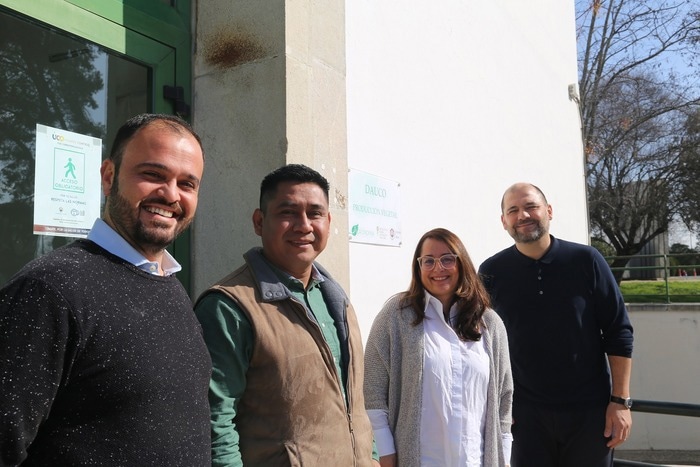Researchers at the University of Cordoba discovered how the entomopathogenic fungus Metarhiziumbrunneum increases iron acquisition in melon and cucumber, after confirming its ability as a pest biocontrol agent.
 Researchers from the University of Córdoba that carried out the research. Image Credit: University of Córdoba.
Researchers from the University of Córdoba that carried out the research. Image Credit: University of Córdoba.
In a climate emergency, where public regulations and approaches are progressively attempting to reduce the environmental impact of chemical synthesis phytosanitary products, the development of new fertilization strategies and biological control agents derived from natural products is essential to moving toward sustainable agriculture.
Thus, entomopathogenic fungi have proven to be an effective tool in the transition to more environmentally friendly agriculture.
Entomopathogenic fungi (microorganisms that cause disease in pest insects) are a powerful biocontrol agent, which the UCO Agricultural Entomology Unit has harnessed in a sustainable olive fly control product.
These microbes also assist plants in dealing with nutritional deficiencies, like iron deficiency, thereby increasing production.
To comprehend the advantages of entomopathogenic fungi in nutrient absorption, scientists from the María de Maeztu Excellence Unit—Department of Agronomy at the UCO (DAUCO)—Fabián García, Enrique Quesada, María José García, and Meelad Yousef reported, for the first time, the processes that the MetarhiziumbrunneumEAMa 01/58-Sustrain employs to enable plants to enhance their iron content.
After comparing three strains of the Metarhiziumbruneum fungi and Beauveria bassiana, the investigators identified that M. brunneumEAMa 01/58-Su provided the most iron available to the plant. Researchers then investigated which iron deficiency responses the fungus induced.
We verified that it induces the two main iron acquisition genes. We could say that it makes plants more efficient at absorbing iron from the soil.”
María José García, Researcher, University of Cordoba
These microorganisms help plants with the acquisition of iron in two ways: direct and indirect.
The direct mechanisms are the part at the molecular level, the changes made by the genes that induce these microorganisms to provide the plant with more iron; while the indirect route occurs when they are in the soil, without affecting the response of the plant, simply because being in the soil makes iron more available to the plant.”
Meelad Yousef, Researcher, University of Cordoba
The research was conducted on cucumber and melon and was a result of a collaboration between the Plant Physiology and Agricultural Entomology groups. The study discovered that after applying the solution containing entomopathogenic fungi, the plant starts to stimulate responses to iron deficiency, which is very essential in Spain because calcareous soils (which make it extremely challenging for plants to absorb iron) are prevalent.
This adds value to the bioinsecticide derived from this strain. The product’s use against major pests affecting these crops, such as aphids and whiteflies, is very efficient and long-lasting (being made from microbes, it does not harm the environment). And now it has the added benefit of something validated by this study: it increases iron acquisition, allowing growers to reduce chemical fertilization (reducing costs and environmental damage).
This research advances the understanding of a biocontrol agent that has now been shown to help plants be more efficient in iron acquisition, offering solutions to agriculture’s greatest challenge: reducing the use of chemical synthesis products that have a negative environmental impact.
Source:
Journal reference:
García-Espinoza, F., et al. (2023). Entomopathogenic Fungi-Mediated Solubilization and Induction of Fe Related Genes in Melon and Cucumber Plants. Journal of Fungi. doi.org/10.3390/jof9020258.